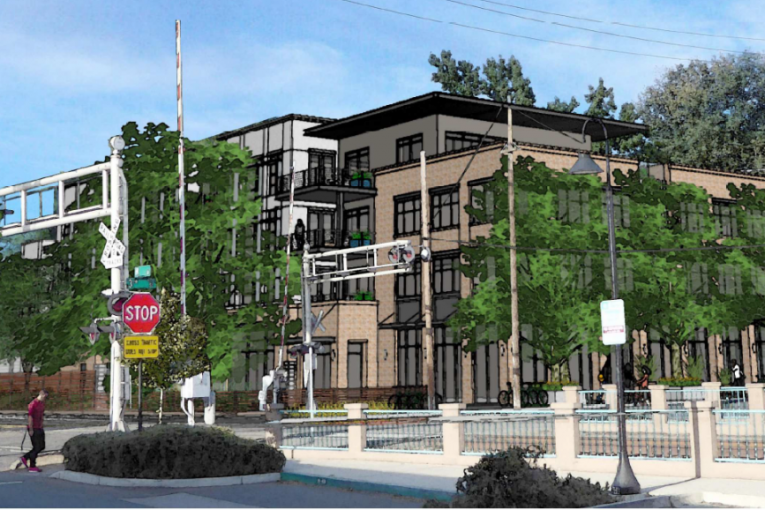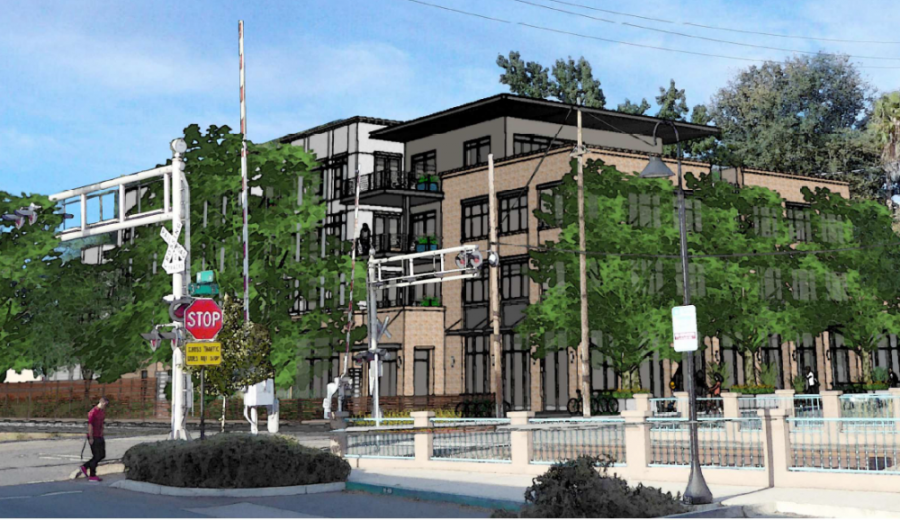

By David M. Greenwald
Executive Editor
Sacramento, CA – The impact of an appellate court decision on Davis’ Trackside continues to reverberate. Last month, an appellate court reversed the decision by Yolo Superior Court Judge Samuel McAdam and ruled in favor of the city and the applicant.
“(W)e conclude substantial evidence supports the City’s approval in that we fail to find that ‘a reasonable person could not have reached the same conclusion’ based on the evidence before the City,” the court writes. “The City therefore acted within its discretion and the trial court erred in reversing its approval of Trackside.”
They add, “We conclude substantial evidence supports the City’s approval, and the Association’s contentions on cross-appeal lack merit. We will therefore reverse the judgment granting the petition for writ of mandate.”
Originally the opinion was ordered not to be published, but upon request by Cal Cities, the court published the opinion so it may be used as precedent in future cases.
In a release from the League of California Cities, they noted, that the court has upheld the longstanding legal principle that “[b]ecause policies in a general plan reflect a range of competing interests, [a city] must be allowed to weigh and  balance the plan’s policies when applying them, and [is entitled to] broad discretion to construe its policies in light of the plan’s purposes.”
balance the plan’s policies when applying them, and [is entitled to] broad discretion to construe its policies in light of the plan’s purposes.”
The case involved the city of Davis’ 2017 approval of a four-story mixed-use project—8,950 square feet of ground-floor retail space and 27 apartments—near the railroad tracks on the perimeter of its downtown core area. When reviewing the project, the city interpreted its own general and specific plans, determined that the project was consistent with those plans, and concluded the project was a good fit for the city.
The Old East Davis Neighborhood Association sued the city, challenging its approval of the project. The association alleged—contrary to the recommendations of city staff and the conclusions of the city council—that the project’s height and scale were inconsistent with the city’s general and specific plans.
The trial court ruled for Old East, concluding that it did not provide a sufficient “transition” to adjacent residential areas, and directed the city to rescind all associated approvals.
The city and applicant then appealed, arguing that the trial court applied the wrong legal standard when evaluating the city’s determination.
The League of California Cities, along with the California State Association of Counties and Sacramento Area Council of Governments, filed a friend-of-the-court brief in support of the city and applicant.
In their brief, they noted that “this case raises important issues that affect all cities.” Specifically, “the trial court’s misapplication of the standard of judicial review governing local land-use decisions implicates the constitutionally allocated authority of cities and counties.”
They noted, “SACOG is interested in this litigation because the trial court’s ruling impairs the ability of the City of Davis, and all of SACOG’s members, to implement the MTP/SCS. The ruling disregards the deference that is owed to SACOG’s member decisions, and specifically those approving critical “smart growth” development necessary to achieve the housing, land-use, environmental, transportation, and sustainability policies in the MTP/SCS, including the State of California’s climate strategy of reducing GHG emissions through regional land planning implemented by local decision makers.”
In this case, “the City of Davis interpreted its own General Plan and related planning documents and concluded that a mixed-use infill project was a good fit for the City.”
The trial court, they write, “took a different view of that project and, though acknowledging the deference owed to the City’s elected policy makers, supplanted those policy makers’ judgment with its own.”
In so deciding, “the court misapplied the standard of judicial review applicable to public agency decisions regarding land use, upholding a challenge to the City’s decision without requiring the challenger to meet its burden to show that no reasonable person could have reached the same conclusion reached by the agency on the evidence before it.
“The trial court erred,” the brief argued. “(T)his Court should reverse the judgment, and affirm the judicial deference owed to local governments in the reasonable interpretation and implementation of their own land-use and planning policies.”
They also argued, that “based on substantial evidence in the record, the project was consistent with the city’s general and specific plans.”
The Third District Court of Appeal reversed the trial court’s decision, holding that the city acted within its discretion when approving the project and the trial court erred in reversing its approval. The court explained that a city council’s determination that a project is consistent with its general plan carries “a strong presumption of regularity” and can only be overturned if the city council abused its discretion.
The Neighborhood Association was disappointed by the decision.
“Residents concerned about the unique feel of Davis should be troubled by this ruling,” they wrote in a response published by the Vanguard. “By overturning the trial court, the appeals court implies that the City does not have to keep its own commitments as implemented in the ordinances and planning documents.
“The appeals court grants the City license to take any provisions agreed upon by the community to protect neighborhoods or specific resources and then interpret them in a way that best serves the interests of developers or other special interests.”







The important lesson is if you want to ensure a regulatory outcome in a legislative directive such as a GP, it needs to be written in a manner that constrains and defines discretion.
Please state your point in a language that anyone could understand.
In other words . . . “what?”
If you say something is X+Y=Z. You need to specifically define what X and Y are first. In this case, what does: “transition” to adjacent residential areas” exactly mean? If it’s not clearly defined, then I guess the default is to go to the authoritative body (the city) that wrote the vague definition in the first place. The burden is on other interested parties to strictly define things at creation of these plans to better control the authoritative body (the city in this case).
Actually, X + Y + Z = location (if you use GPS, add “+T”)…
I agree, as I’ve modified it… if one does not want to have discretion, or account for changed, or unusual (unanticipated), circumstances… provides additional protection from ‘capricious or arbitrary’ actions, but does little towards flexibility to deal with specific situations. Binds everyone’s hands…
Some folk are into ‘bondage’…
Yeah but it takes a truly sick and deviant mind to be into legal and political bondage.
Well, if you want complete flexibility…sure…just go on a handshake agreement and work it out as you go along. But you know that won’t last long. And my point about the burden being on OTHER interested parties is that the court ruling seems to default the interpretation of a poorly defined/vague planning statement to the writer of the document….the city. So if that’s the case then the burden does fall on all OTHER interested parties to hold the authoritative party/the city to the intended agreed upon terms.
Which is what many of those upset by the CC action, appellate court seem to demand… the “legal and political bondage”… to the way they interpret the documents…
And the uber-supporters of the JeRkeD seem to want every “t” crossed, every “i” dotted, before a vote is taken… and then adhered to as a “legal and political bondage” if such a measure passed…
You are correct, as to what I quoted from you…
“Process”, not “Documents”, is how the appellate court decided the trial judge erred. On the legal side… the ‘political side’ was not within their purview…
To be clear, the original proposal for Trackside was flat out inappropriate… but it was modified… but apparently, not enough to sate some folk…
As I’ve said several times since it was proposed, WM, the first proposal was fake, meant to look like they’d done something when they just ‘gave in’ to what they wanted in the first place. At our very first neighborhood meeting after the Trackside announcement I said, “We are not fighting a six story building, we are fighting a four story building”. And of course what happened next? A four story version was rolled out. No way would a basement have even been dug there with the toxins in the soil, as was proposed to allow parking with the six-story version. As well, two of investors told me they had been told it was a four story proposal.
So can we finally drop that folly as real?